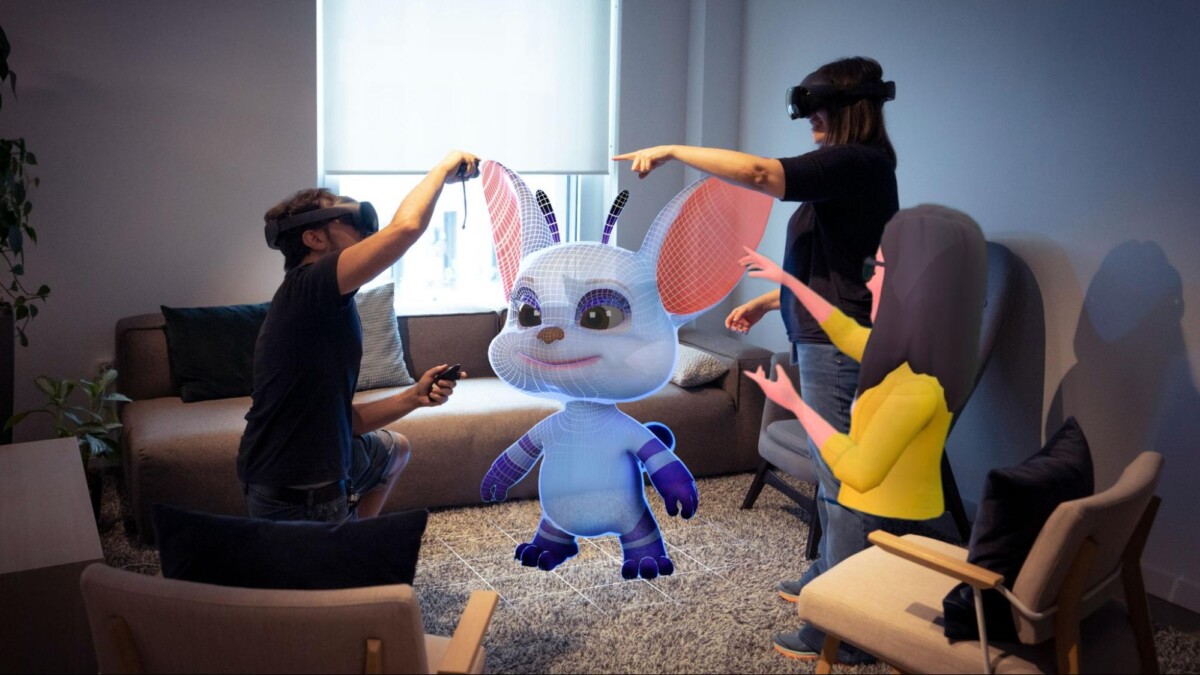Meta brings local multiplayer API to Quest Pro, Quest 2 to follow in 2023

Update from December 17, 2022:
The API is now generally available (see below for details).
Update from December 9, 2022:
There is an article in the Meta Store help section that explains how point clouds work.
Point cloud data sharing can be enabled in the Meta Quest 2 settings, under Settings > Privacy > Device Permissions.
So it seems that local multiplayer will work identically with Meta Quest 2 and Meta Quest Pro, and the feature will basically be available to both devices.
In the same article, local multiplayer is listed as one of several use cases for point cloud tracking. It does not say anywhere that the feature is reserved for Meta Quest Pro.
Update December 17, 2022:
Meta announces on the Oculus Developer Blog that the interface is now available to local multiplayer developers.
"Shared Spatial Anchors allows anchors created by one user to be shared with others in the same physical space. This enables you to build local multiplayer experiences by creating a shared world-locked frame of reference for multiple users. For example, two or more people can sit at the same table and play a virtual board game on top of it."
Meta points to early examples of the technology presented at Meta Connect 2022. The company confirms that for privacy reasons, you have to enable point cloud sharing in Quest settings.
The interface currently only supports Meta Quest Pro. Meta Quest 2 is expected to follow in early 2023.
Update from December 9, 2022:
Meta shows how Quest Pro and Quest 2 uses point clouds to enable local multiplayer experiences. This way, you can play mixed reality table tennis.
The animated video shows two people standing at the ends of an oblong table playing table tennis. Both are wearing a Quest Pro, which transforms the traditional physical table and VR controllers into a ping pong table and ping pong paddle, simulating the ball.
Meta Quest Pro offers exciting mixed reality experiences when you and your friends are in the same physical location," the video explains.
According to the video, the headsets capture the outline of a physical object based on distinctive visual features. This information is then shared and synchronized between the two devices.
Interestingly, the point clouds are "shared with other headsets via Meta servers." To protect your privacy, you can decide for yourself whether you want to share point cloud data, Meta says.
Local multiplayer should also come to Quest 2
At Meta Connect 2022, the company announced a new interface called Shared Spatial Anchors. It allows developers to create local multiplayer experiences for Quest headsets. It is unclear if the video shows this interface or another local multiplayer technology developed specifically for Meta Quest Pro.
Meta kept a fairly tight lid on the technology behind Shared Spatial Anchors when announcing it, but didn't leave the impression that the new interface will be reserved for Meta Quest Pro. On the contrary, in a video showing the technology in action (see video below), players used Quest 2 exclusively.
If it is the same interface, we now at least have a better idea of how it works. Meta itself described Shared Spatial Anchors rather vaguely in October:
"Shared Spatial Anchors builds on the Spatial Anchors API by providing additional methods that allow users to start co-located sessions. You get new APIs to save and grant other users access to shareable anchors. Upon loading shared anchors, users are able to establish a common frame of reference so people in the same physical space can see and interact with the same virtual content, unlocking co-location."
In any case, the technology enables exciting new usage scenarios, provided there are multiple Quest headsets in a household or business. VR arcades should benefit from the new possibilities, as multiplayer experiences would no longer require external sensor technology for spatial synchronization between individual devices. Meta itself demonstrated such an application about four years ago with the first Quest.
#OC5 #OculusQuest pic.twitter.com/XJlIWMzoxa
— λndy Melim (@AndrewMelim) September 26, 2018
Note: Links to online stores in articles can be so-called affiliate links. If you buy through this link, MIXED receives a commission from the provider. For you the price does not change.